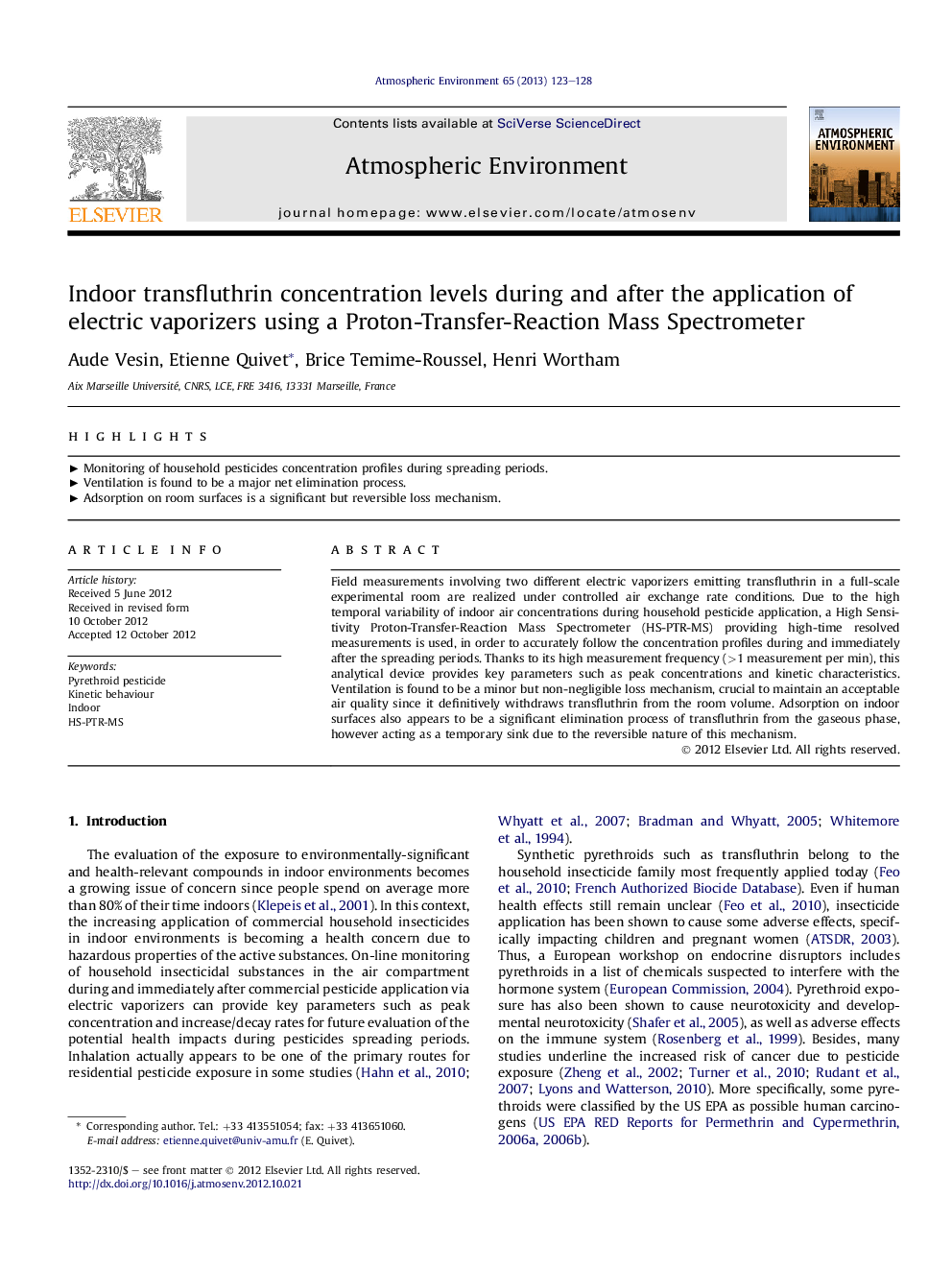| Article ID | Journal | Published Year | Pages | File Type |
|---|---|---|---|---|
| 4438531 | Atmospheric Environment | 2013 | 6 Pages |
Field measurements involving two different electric vaporizers emitting transfluthrin in a full-scale experimental room are realized under controlled air exchange rate conditions. Due to the high temporal variability of indoor air concentrations during household pesticide application, a High Sensitivity Proton-Transfer-Reaction Mass Spectrometer (HS-PTR-MS) providing high-time resolved measurements is used, in order to accurately follow the concentration profiles during and immediately after the spreading periods. Thanks to its high measurement frequency (>1 measurement per min), this analytical device provides key parameters such as peak concentrations and kinetic characteristics. Ventilation is found to be a minor but non-negligible loss mechanism, crucial to maintain an acceptable air quality since it definitively withdraws transfluthrin from the room volume. Adsorption on indoor surfaces also appears to be a significant elimination process of transfluthrin from the gaseous phase, however acting as a temporary sink due to the reversible nature of this mechanism.
► Monitoring of household pesticides concentration profiles during spreading periods. ► Ventilation is found to be a major net elimination process. ► Adsorption on room surfaces is a significant but reversible loss mechanism.
